Note: I updated this answer to include a description of the historical techniques.
Historical Techniques
Newton developed his theory of gravitation primarily to explain the motions of the bodies that form the solar system. He also realized that while gravity makes the Earth orbit the Sun and the Moon orbit the Earth, it is also responsible for apples falling from trees. Everything attracts everything else, gravitationally. That suggested that one could in theory measure the gravitational attraction between a pair of small spheres. Newton himself realized this, but he didn’t think it was very practical. Certainly not two small spheres (Newton 1846):
Whence a sphere of one foot in diameter, and of a like nature to the
earth, would attract a small body placed near its surface with a force
20000000 times less than the earth would do if placed near its surface;
but so small a force could produce no sensible effect. If two such spheres
were distant but by 1 of an inch, they would not, even in spaces void of
resistance, come together by the force of their mutual attraction in less
than a month’s time; and less spheres will come together at a rate yet
slower, namely in the proportion of their diameters.
Maybe a mountain?
Nay, whole mountains will not be sufficient to produce any sensible effect. A mountain of an hemispherical figure, three miles high, and six broad, will not, by its attraction, draw the pendulum two minutes out of the true perpendicular :
and it is only in the great bodies of the planets that these forces are to be
perceived, …
Newton’s idea on the impracticality of such tiny measurements would turn out to be incorrect. Little did Newton know that the scientific revolution that he himself helped propel would quickly make such tiny measurements possible.
Weighing the Earth using mountains
The first attempt to “weigh the Earth” was made during the French geodesic mission to Peru by Pierre Bouguer, Charles Marie de La Condamine, and Louis Godin. Their primary mission was to determine the shape of the Earth. Did the Earth have an equatorial bulge, as predicted by Newton? (The French had sent a different team to Lapland to accomplish the same end.) Bouguer used the trip as an opportunity to test Newton’s suggestion that a mountain would deflect a plumb bob from surveyed normal. He chose Chimborazo as the subject mountain. Unfortunately, the measurements came up completely wrong. The plumb bob was deflected, but in the wrong direction. Bouguer measured a slight deflection away from the mountain (Beeson, webpage).
The next attempt was the Schiehallion experiment. While surveying the Mason-Dixon line, Charles Mason and Jeremiah Dixon found that occasionally their calibrations just couldn’t be made to agree with one another. The cause was that their plumb bobs occasionally deviated from surveyed normal. This discovery led to the Schiehallion experiment conducted by Nevil Maskelyne. Unlike Bouguer, Maskelyne did get a positive result, a deflection of 11.6 arc seconds, and in the right direction. The observed deflections led Maskelyne to conclude that the mean density of the Earth is 4.713 times that of water (von Zittel 1914).
It turns out that Newton’s idea of using a mountain is fundamentally flawed. Others tried to repeat these experiments using other mountains. Many measured a negative deflection, as did Bouguer. There’s a good reason for this. For the same reason that we only see a small part of an iceberg (the bulk is underwater), we only see a small part of a mountain. The bulk of the mountain is inside the Earth. A huge isolated mountain should make a plumb bob deviate away from the mountain.
Weighing the Earth using small masses
So if using mountains is dubious, what does that say about the dubiousness of using small masses that would take months to approach one another even if separated by mere inches?
This turned out to be a very good idea. Those small masses are controllable and their masses can be measured to a high degree of accuracy. There’s no need to wait until they collide. Simply measure the force they exert upon one another.
This idea was the basis for the Cavendish experiment (Cavendish 1798). Cavendish used two small and two large lead spheres. The two small spheres were hung from opposite ends of a horizontal wooden arm. The wooden arm in turn was suspended by a wire. The two large spheres were mounted on a separate device that he could turn to bring a large sphere very close to a small sphere. This close separation resulted in a gravitational force between the small and large spheres, which in turn caused the wire holding the wooden arm to twist. The torsion in the wire acted to counterbalance this gravitational force. Eventually the system settled to an equilibrium state. He measured the torsion by observing the angular deviation of the arm from its untwisted state. He calibrated this torsion by a different set of measurements. Finally, by weighing those lead spheres Cavendish was able to calculate the mean density of the Earth.
Note that Cavendish did not measure the universal gravitational constant G. There is no mention of a gravitational constant in Cavendish’s paper. The notion that Cavendish measured G is a bit of historical revisionism. The modern notation of Newton’s law of universal gravitation, $F=\frac {GMm}{r^2}$, simply did not exist in Cavendish’s time. It wasn’t until 75 years after Cavendish’s experiments that Newton’s law of universal gravitation was reformulated in terms of the gravitational constant G. Scientists of Newton’s and Cavendish’s times wrote in terms of proportionalities rather than using a constant of proportionality.
The very intent of Cavendish’s experiment was to “weigh” the Earth, and that is exactly what he did.
Modern Techniques
If the Earth was spherical, if there were no other perturbing effects such as gravitational acceleration toward the Moon and Sun, and if Newton’s theory of gravitation was correct, the period of a small satellite orbiting the Earth is given by Kepler’s third law: $\left( \frac T {2\pi} \right)^2 = \frac {a^3}{GM_E}$ . Here $T$ is the satellite’s period, $a$ is the satellite’s semi-major axis (orbital radius), $G$ is the universal gravitational constant, and $M_E$ is the mass of the Earth.
From this, it’s easy solve for the product $G M_E$ if the period $T$ and the orbital radius $a$ are known: $G M_E = \left( \frac {2\pi} T \right)^2 a^3$. To calculate the mass of the Earth, all one needs to do is divide by $G$. There’s a catch, though. If the product is $G M_E$ is known to a high degree of accuracy (and it is), dividing by $G$ will lose a lot of accuracy because the gravitational constant $G$ is only known to four decimal places of accuracy. This lack of knowledge of $G$ inherently plagues any precise measurement of the mass of the Earth.
I put a lot of caveats on this calculation:
- The Earth isn’t spherical. The Earth is better modeled as an oblate spheroid. That equatorial bulge perturbs the orbits of satellites (as do deviations from the oblate spheroid model).
- The Earth isn’t alone in the universe. Gravitation from the Moon and Sun (and the other planets) perturb the orbits of satellites. So does radiation from the Sun and from the Earth.
- Newton’s theory of gravitation is only approximately correct. Einstein’s theory of general relativity provides a better model. Deviations between Newton’s and Einstein’s theories become observable given precise measurements over a long period of time.
These perturbations need to be taken into account, but the basic idea still stands: One can “weigh the Earth” by precisely observing a satellite for a long period of time. What’s needed is a satellite specially suited to that purpose. Here it is:

This is LAGEOS-1, launched in 1976. An identical twin, LAGEOS-2, was deployed in 1992. These are extremely simple satellites. They have no sensors, no effectors, no communications equipment, no electronics. They are completely passive satellites. They are just solid brass balls 60 cm in diameter, covered with retroreflectors.
Instead, of having the satellite make measurements, people on the ground aim lasers at the satellites. That the satellites are covered with retroreflectors means some of the laser light that hits a satellite will be reflected back to the source. Precisely timing the delay between the emission and the reception of the reflected light gives a precise measure of the distance to the satellite. Precisely measuring the frequency change between the transmitted signal and the return signal gives a precise measure of the rate at which the distance is changing.
By accumulating these measurements over time, scientists can very precisely determine these satellites orbits, and from that they can “weigh the Earth”. The current estimate of the product $G M_E$ is $G M_E=398600.4418 \pm 0.0009 \ \text{km}^3/\text{s}^2$. (NIMA 2000). That tiny error means this is accurate to 8.6 decimal places. Almost all of the error in the mass of the Earth is going to come from the uncertainty in $G$.
References
M. Beeson, “Bouguer fails to weigh the Earth” (webpage)
H. Cavendish, “Experiments to determine the Density of the Earth,” Phil. Trans. R. Soc. London, 88 (1798) 469-526
I. Newton (translated by A. Motte), Principia, The System of the World (1846)
NIMA Technical Report TR8350.2, “Department of Defense World Geodetic System 1984, Its Definition and Relationships With Local Geodetic Systems”, Third Edition, January 2000
K. von Zittel (translated by M. Ogilvie-Gordon), “History of Geology and Palæontology to the End of the Nineteenth Century,” (1914)





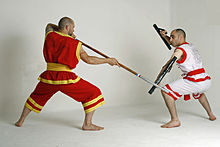



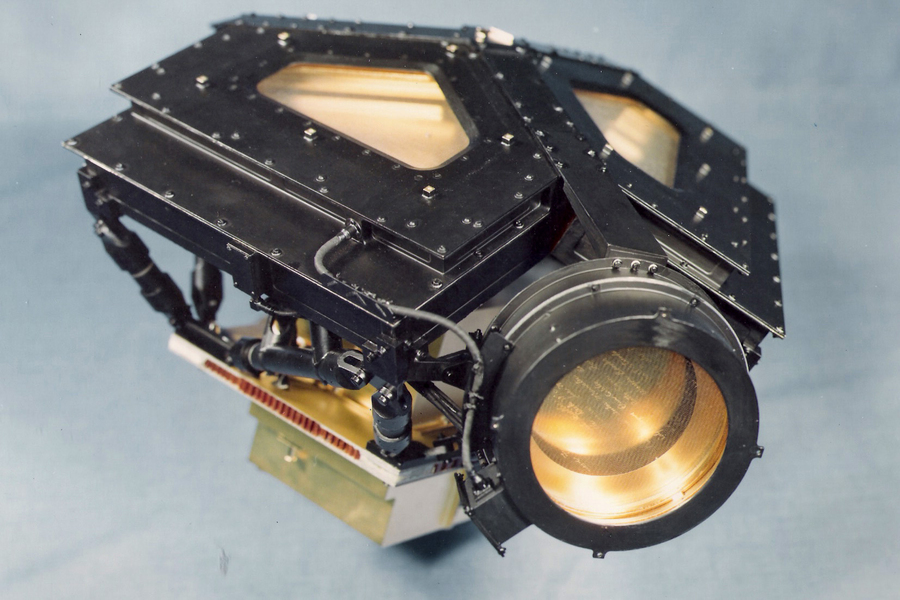

 please let me know!
please let me know!


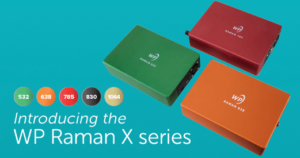 Morrisville, NC – January 19, 2024 – Wasatch Photonics is excited to announce its new flagship line of compact Raman spectrometers and systems. The WP Raman X series is the most powerful, comprehensive compact Raman product line ever created, with superior sensitivity and flexibility to serve the needs of researchers and OEM instrument developers alike. The X series product family includes modular spectrometers, integrated lasers, complete Raman spectroscopy systems, and OEM modules from 532-1064 nm, configurable to the needs of each application. It has been designed with a singular goal – to accelerate the development of new applications of Raman and bring them to life.
Morrisville, NC – January 19, 2024 – Wasatch Photonics is excited to announce its new flagship line of compact Raman spectrometers and systems. The WP Raman X series is the most powerful, comprehensive compact Raman product line ever created, with superior sensitivity and flexibility to serve the needs of researchers and OEM instrument developers alike. The X series product family includes modular spectrometers, integrated lasers, complete Raman spectroscopy systems, and OEM modules from 532-1064 nm, configurable to the needs of each application. It has been designed with a singular goal – to accelerate the development of new applications of Raman and bring them to life.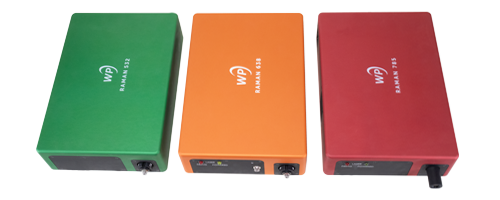 Configuration options include a choice of f/1.3 or f/1.8 input aperture, detector cooling level, slit size, and sample coupling. Models available include: 1) standalone spectrometers for modular Raman spectroscopy, 2) spectrometers with integrated excitation laser to reduce size, cabling and cost, 3) fully integrated Raman systems for maximum signal in the smallest footprint, and 4) OEM versions of each to reduce size, weight, and cost in volume. These options allow the user to balance signal, resolution, range, and form factor according to the unique needs of their application. Data collection and spectrometer control is included through the company’s own ENLIGHTEN™ operating software and software development kits for C/C++, C#, Python, LabVIEW, MATLAB, and other languages.
Configuration options include a choice of f/1.3 or f/1.8 input aperture, detector cooling level, slit size, and sample coupling. Models available include: 1) standalone spectrometers for modular Raman spectroscopy, 2) spectrometers with integrated excitation laser to reduce size, cabling and cost, 3) fully integrated Raman systems for maximum signal in the smallest footprint, and 4) OEM versions of each to reduce size, weight, and cost in volume. These options allow the user to balance signal, resolution, range, and form factor according to the unique needs of their application. Data collection and spectrometer control is included through the company’s own ENLIGHTEN™ operating software and software development kits for C/C++, C#, Python, LabVIEW, MATLAB, and other languages.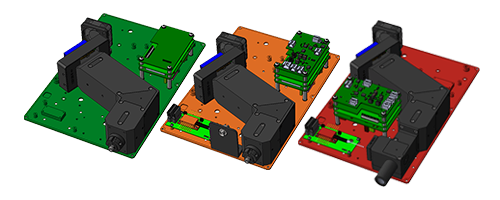 The X series’ ‘OEM by design’ approach ensures consistent performance at every stage, allowing OEMs to transition easily and confidently from research to product development faster, more efficiently, and with lower risk. All X series OEM modules, 532-1064 nm, are supported by a team of product and application specialists, open-source software, raw data access, and GitHub resources to simplify software development.
The X series’ ‘OEM by design’ approach ensures consistent performance at every stage, allowing OEMs to transition easily and confidently from research to product development faster, more efficiently, and with lower risk. All X series OEM modules, 532-1064 nm, are supported by a team of product and application specialists, open-source software, raw data access, and GitHub resources to simplify software development.



